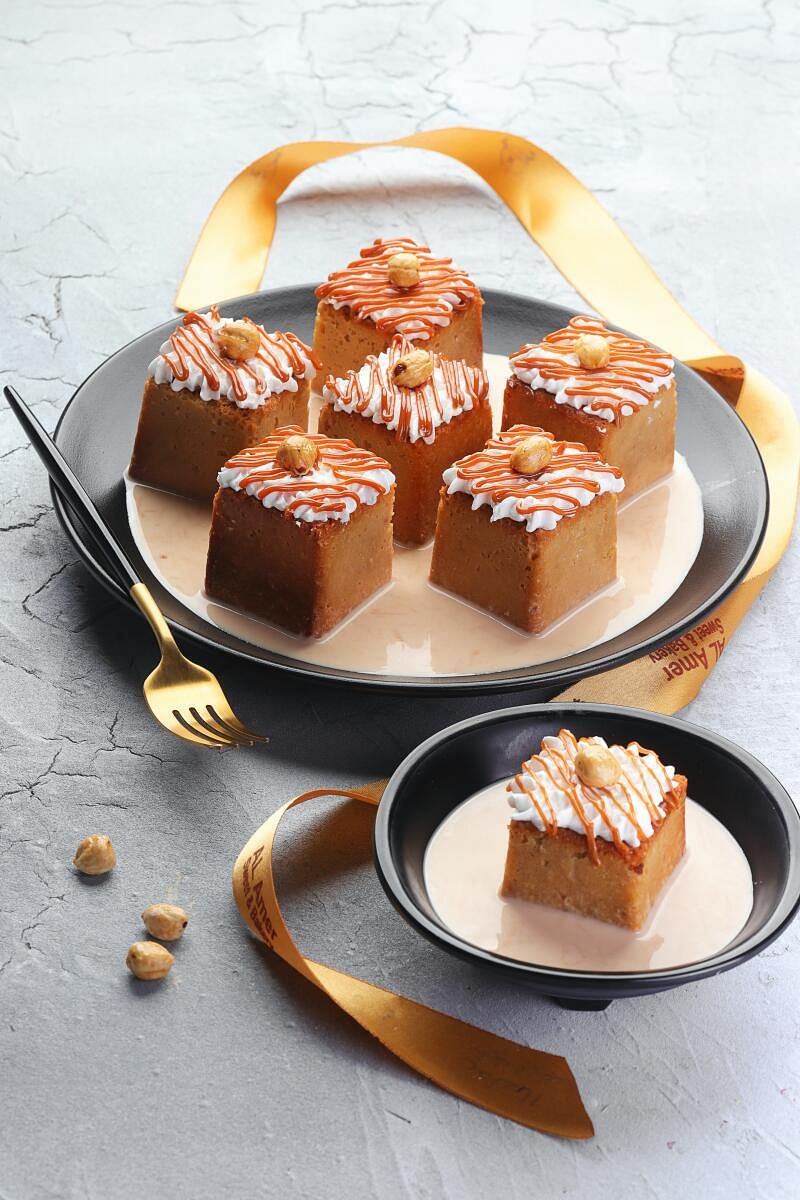

Traditionally, an entremet is the 13th course in the classic 17-course French menu. Literally translated, entre means between and mets means courses. The modern entremet is a product of several pastry techniques evolving over the years. Today, the entremet is a culmination of different textural components made using a variety of classic French pastry techniques.
This is why any chef looking to master the entremets not only requires a great deal of patience but must have a thorough understanding and knowledge of the various techniques.
History & evolution
The practice of having an entremet is traced back to the medieval era, when the upper class, nobility and royalty would have lavish dinners. Later on, close to the end of the Middle Ages, the edible course was swapped out with inedible forms of entertainment such as music, dance, or theatrical performances.
In the 14th century in England, entremets began to be called ‘subtleties’ referring to the clever or subtle way the course was often delivered.
With time, entremets became increasingly elaborate and would involve cooked animals dressed up to look like other animals or cooked birds dressed in their own foliage to look life-like.
The evolution of the entremets to the delicate dessert that it is today is still unclear. In modern times, the entremet has moved away from the theme of just entertainment and has delved deeper into innovations in the patisserie industry.
It has become a way for chefs to display their culinary prowess and experiment with various texture and flavour combinations.
Mousse
The mousse is what gives the entremets its body. It is set into the desired shape using silicone moulds which allow for the set product to be easily removed without deforming it. It is mostly set in a cylindrical shape but now there are silicone moulds available for a variety of other shapes as well. The mousse encompasses the other inserts and holds them in place, keeping them from mixing with each other. The flavour of the mousse may be fruity, nutty, or chocolate which will form the base or primary flavour of the entremets. The texture of the mousse is expected to be light and airy but at the same time, it must be firm enough to hold its shape when taken out of the mould.
Sponge
There are a variety of sponge cakes to choose from and each has its own specific process and differs slightly in its textures as well. There are a few key points to consider while choosing the type of sponge to be used. The sponge must be light and airy and must be able to preserve its texture when chilled for long periods. The most common types of sponge cakes that can be used in entremets are Genoise, chiffon, angel’s food cake, Victoria sponge cake, and Joconde sponge cake.
Crunch or base
This layer is usually some type of a nut praline or thin, wafer-like biscuit. It must be hard enough to offer a crunch texture but not so hard that it is difficult to cut through with a spoon or knife. It is typically placed right above or below the sponge layer and together they form the base of the entremets.
Gelee
Fruit jellies and jams are most commonly used for this layer. Compotes and cremeux may also be used. They offer lightness to the entremets and are set using gelling agents such as gelatine, agar-agar, gellan, xanthan, pectin, guar gum, and carrageenan. It is important to remember that all gelling agents must be properly hydrated before they can be used or will remain suspended as lumps in the mixture.
Glaze
The shiny, smooth outer coat of the entremets is the glaze that enrobes all the different components within. It offers little to no flavour as it is a very thin layer and primarily serves the purpose of enhancing the visual appeal of the entremets. The glossy, reflective surface that the glaze produces has earned it the name ‘mirror’ glaze. The glaze must be warm and loose enough to pour over the entremets but not too much, so it sets quickly as it flows over the edges.
Construction of entremets
Entremets are generally assembled upside down. So, the base (sponge and crunch base) would be the last components to be added. It is wise to set the layers moving from the outermost to the centre. The mousse would be the first to be pipped into the selected mould. Inserts such as the gelee would have to be first set to the desired size and shape before assembling. Each insert is then gently pressed into the mousse. It is important to ensure that the mould being used is frozen before piping in the elements. This will keep the mixture from melting on contact. The final layer should be aligned with the border of the mould (mould should be filled to the brim for ease of removal). The assembled entremets would then have to be chilled or frozen until it sets.
Once set, the mould would have to be heated to just the right temperature using either a hot water bath or a blow torch. It is then tipped onto the cake board and carefully lifted off in a fluid motion. Once removed from the mould, the glaze is poured over it. The glazed entremets is then placed back in the freezer until it is time to serve. An entremets can be stored in the freezer for no more than two days. It is garnished only just before serving.
(The author is India’s leading pastry chef based in Bengaluru who exudes the vibe of a guru — calm, peaceful and funny. A pandora of knowledge, he is Master Shifu in disguise — a modern teacher who imbibes the art & science of baking. He’s an avid reader and a tabla player who loves to sway to his own tunes!)